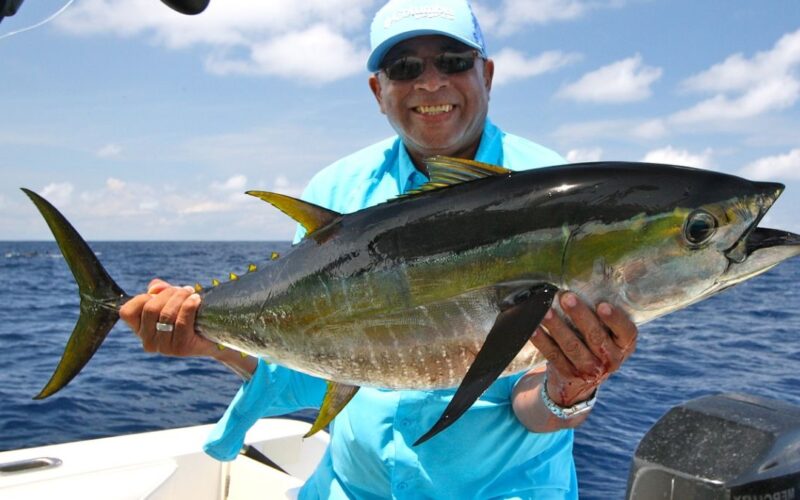Tuna, the sleek and powerful swimmer of the ocean depths, is not just a culinary delight but also a fascinating marine species with a myriad of interesting traits. From its remarkable speed to the delicate art of sushi preparation, tuna holds a special place in both the oceanic ecosystem and human culture. In this exploration, we unveil 10 intriguing facts about tuna, shedding light on the ocean’s swift and versatile marvel.
Diverse Tuna Species
Tuna encompasses a diverse group of species, each with its unique characteristics. Some notable tuna species include the Bluefin tuna, Yellowfin tuna, Albacore tuna, and Skipjack tuna. These species vary in size, habitat, and migratory patterns, contributing to the rich tapestry of marine life.
Majestic Migrations
Tuna are renowned for their remarkable migrations across vast oceanic expanses. These journeys, often covering thousands of miles, play a crucial role in the ecological balance of marine ecosystems. Tuna migrate in search of optimal feeding grounds and suitable breeding areas, making them key players in the interconnected web of marine life.
Speed and Agility
Tuna are among the fastest swimmers in the ocean, reaching speeds of up to 75 km/h (47 mph). Their streamlined bodies, powerful tails, and specialized circulatory systems enable them to maintain high speeds over long distances. This exceptional speed is not only a survival mechanism but also a key factor in their effectiveness as predators.

Sushi-Grade Tuna
Tuna, especially the Bluefin variety, is highly prized in the culinary world for its sushi-grade quality. Sushi-grade tuna is characterized by its impeccable freshness, texture, and taste. It is meticulously handled and stored to maintain its pristine quality, making it a sought-after ingredient for sushi and sashimi aficionados.
Tuna Fishing Methods
Tuna fishing employs various methods, each with its unique set of challenges and environmental considerations. Pole-and-line fishing, longline fishing, and purse seine fishing are among the common techniques. Sustainable fishing practices aim to minimize bycatch and reduce the impact on non-target species, contributing to the conservation of tuna populations.
Tuna Industry and Economy
The tuna industry is a significant contributor to the global economy. Tuna fisheries generate employment opportunities, support coastal communities, and contribute to international trade. The demand for tuna in both domestic and international markets has led to the development of a robust and intricate industry that spans the globe.
Tuna Nutrition and Health Benefits
Beyond its culinary allure, tuna is a nutritional powerhouse. Rich in omega-3 fatty acids, protein, vitamins, and minerals, tuna offers a range of health benefits. Regular consumption of tuna is associated with improved cardiovascular health, brain function, and overall well-being. Tuna’s nutritional profile makes it a popular choice for those seeking a healthy and balanced diet.
Threats to Tuna Populations
Despite their significance, tuna populations face various threats, primarily due to overfishing and habitat degradation. The demand for tuna, especially high-value species like Bluefin tuna, has led to concerns about the sustainability of current fishing practices. Conservation efforts and sustainable fishing initiatives are crucial to ensuring the long-term viability of tuna populations.

Tuna Conservation Measures
To address the challenges facing tuna populations, conservation measures have been implemented globally. These include the establishment of marine protected areas, regulations on fishing quotas, and initiatives to reduce illegal, unreported, and unregulated (IUU) fishing. Collaborative efforts between governments, conservation organizations, and the fishing industry aim to strike a balance between meeting human needs and preserving marine ecosystems.
Cultural Significance
Tuna holds cultural significance in various coastal communities around the world. From traditional fishing practices to rituals and celebrations centered around the tuna harvest, these majestic fish are woven into the fabric of maritime cultures. The reverence for tuna reflects the intricate relationship between communities and the ocean’s bounty.
Tuna, with its diverse species, impressive migrations, and culinary allure, stands as a testament to the intricate balance of nature and human interaction. As we savor the exquisite taste of sushi-grade tuna, it’s essential to appreciate the ecological role these swift swimmers play in the vast expanse of the ocean. The conservation of tuna populations and the promotion of sustainable fishing practices are critical to ensuring that future generations can continue to marvel at the tantalizing tales of these oceanic wonders.










